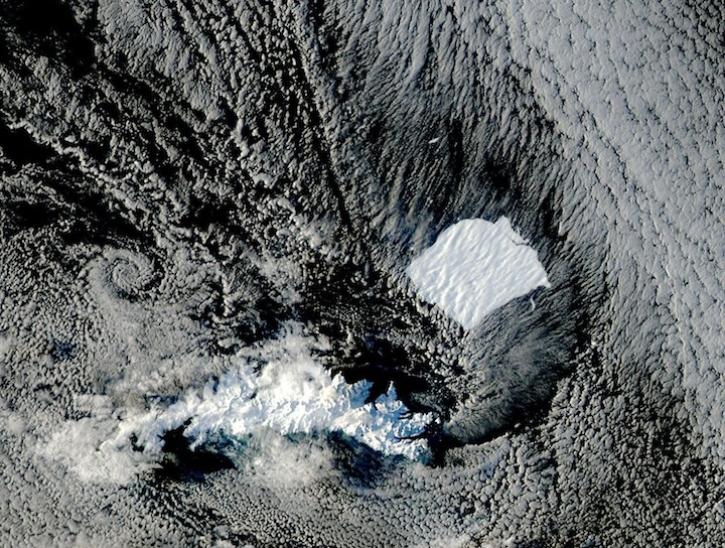N: 90 S: -90 E: 180 W: -180
Description
The MODIS Level 1B Near Real Time (NRT) data set contains calibrated and geolocated at-aperture radiances for 36 discrete bands located in the 0.4 to 14.4 micron region of electromagentic spectrum. These data are generated from the MODIS Level 1A scans of raw radiance and in the process converted to geophysical units of W/(m^2 um sr). In addition, the Earth Bi-directional Reflectance Distribution Function (BRDF) may be determined for the solar reflective bands (1-19, 26) through knowledge of the solar irradiance (e.g., determined from MODIS solar diffuser data, and from the target illumination geometry).
Additional data are provided including quality flags, error estimates and calibration data. Visible, shortwave infrared, and near infrared measurements are only made during the daytime, while radiances for the thermal infrared region (bands 20-25, 27-36) are measured continuously.
Channels 1 and 2 have 250 m resolution, channels 3 through 7 have 500m resolution, and the rest have 1 km resolution. However, for the MODIS L1B 1 km product, the 250 m and 500 m band radiance data and their associated uncertainties have been aggregated to 1km resolution. Thus the entire channel data set is referenced to the same spatial and geolocation scales. Separate L1B products are available for the 250 m channels (MYD02QKM) and 500 m channels (MYD02HKM) that preserve the original resolution of the data.
Spatial resolution for pixels at nadir is 1 km, degrading to 4.8 km in the along-scan direction at the scan extremes. However, thanks to the overlapping of consecutive swaths and respectively pixels there, the resulting resolution at the scan extremes is about 2km. A 55 degree scanning pattern at the EOS orbit of 705 km results in a 2330km orbital swath width and provides global coverage every one to two days. A single MODIS Level 1B granule will nominally contain a scene built from 203 scans (or swaths) sampled 1354 times in the cross-track direction, corresponding to approximately 5 minutes worth of data. Since an individual MODIS scan (or swath) will contain 10 along-track spatial elements, the scene will be composed of (1354 x 2030) pixels, resulting in a spatial coverage of (2330 km x 2030 km). Due to the MODIS scan geometry, there will be increasing overlap occurring beyond about 25 degrees scan angle.
The MODIS L1B data are stored in the Earth Observing System Hierarchical Data Format (HDF-EOS) which is an extension of HDF as developed by the National Center for Supercomputer Applications (NCSA) at the University of Illinois. A typical file size will be approximately 260 MB. The Shortname for this product is MYD021KM.
Product Summary
Citation
Citation is critically important for dataset documentation and discovery. This dataset is openly shared, without restriction, in accordance with the EOSDIS Data Use and Citation Guidance.
Copy Citation
File Naming Convention
ESDT Earth Science Data Type or Shortname
A Stands for Acquisition
YYYYDDD Data acquisition year and Day-of-year
CCC Version ID of the data collection
Format File format suffix, which in the above case represents HDF

